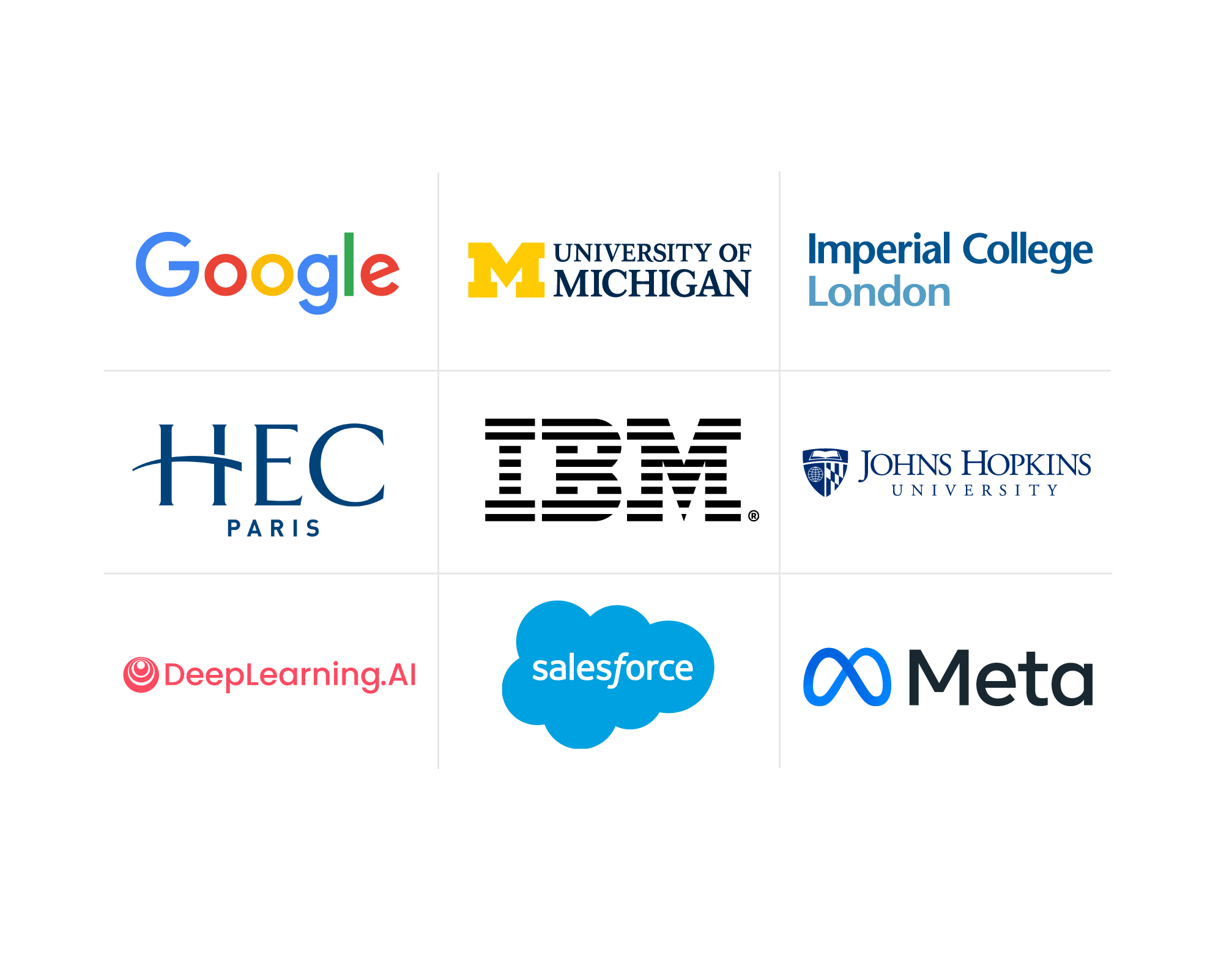Why Is Diversity Important in the Workplace?
Learn why diversity is vital in the workplace, including increased productivity, better engagement, and improved company culture.
![[Featured image] Diverse employees talk in a friendly manner in a turquoise hallway](https://d3njjcbhbojbot.cloudfront.net/api/utilities/v1/imageproxy/https://images.ctfassets.net/2pudprfttvy6/3Kyvql6Vz8JmY6ve8Fr2Hc/b9fb511268661b8b3bf372fd1d452455/GettyImages-740525549.jpg?w=1500&h=680&q=60&fit=fill&f=faces&fm=jpg&fl=progressive&auto=format%2Ccompress&dpr=1&w=1000)
Diversity in the workplace means maintaining a workforce of people with varying backgrounds, perspectives, abilities, and lifestyles. Not only is diversity a crucial element to a strong company culture and easier recruitment, but it also drives profit [1] and innovation [2].
In the United States, 72 percent of full-time employees value working with people different from themselves, according to data gathered by Dynata for its 2021 Global Consumer Trends report on Diversity, Equity, and Inclusion [3]. Mckinsey's research reveals that the global gross domestic product (GDP) could increase by $12 to $28 trillion by 2025 if all countries elevate gender equality in the workplace [4].
Explore the benefits of workplace diversity, the challenges of having a non-diverse workplace, and strategies you can use to elevate the level of diversity in your workforce.
What is workplace diversity?
Workplace diversity expresses itself in many different ways. The word “diversity” has been used as a buzzword enough that it’s not always clear what it means. Diversity appears in two main ways: inherent and acquired.
Inherent diversity is the diversity we are born with, like race or assigned sex. Acquired diversity refers to that which we get through our culture and throughout our lives, such as our religion or education level. Both kinds of diversity are essential and can lead to measurable financial growth and innovation within an organization, which we will discuss in detail.

Why is diversity important in the workplace?
Workplace diversity can provide access to a more robust talent pool, help you better understand your customers' needs and wants, and increase your profit. Many aspects of a company can be improved through diversity, whether designing a prototype, interviewing applicants, or running a social media campaign. Diversity can help drive creativity and innovation, find and retain good talent, and build a reputation as a thoughtful company. Let's take a look at some of these benefits:
Access to more talent
When you limit your hiring pool intentionally or through unconscious bias, you cut yourself off from talented potential employees. By embracing workplace diversity, you can look for new avenues to find skilled applicants by reaching new audiences. By curating a reputation of diversity, your company will naturally attract a more diverse set of applicants. Plus, a company culture that embraces diversity will help lower its turnover rate in the first place so you can focus hiring efforts on growth and not replacements for employees who have left.
Enhanced understanding of customers and their needs
Encouraging diversity in the workplace can lead to a more diverse customer base, as customers seek out companies that truly comprehend their pain points and fulfill their requirements. With this understanding, the company can design and market products and services that are more inclusive, innovative, and tailored to the diverse customer base. In other words, diversity in the workplace can lead to a competitive edge in the market.
Increased profit
Diversity is often brought up in the context of doing what’s right for your employees and your company culture. But a 2017 McKinsey report found that when it comes to diversity, doing the right thing for your company culture is also doing the right thing for your bottom line. The companies ranked the highest for gender diversity were 21 percent more likely to bring in above-average profit [1].
Better productivity, creativity, and innovation
A workplace that fosters diversity brings together a multitude of ideas and perspectives, igniting innovation and creativity. During a brainstorming session, a diverse group of individuals can highlight nuances and insights that may not have been noticed by each individual alone. This leads to collaborative problem-solving, as team members build upon each other's ideas in exciting and novel ways. The greater the diversity of the workforce, the more dynamic and powerful these brainstorming sessions become, producing solutions that are more creative, inclusive, and effective.
A 2018 study by the Boston Consulting Group found that companies with “above-average diversity on their management teams” earned 19 percent higher revenue tied to innovation. For those high-ranking companies, revenue from new products totaled 45 percent of overall revenue, compared to 26 percent for companies with below-average diversity [2].
Boosted employee engagement
It makes sense that employees who feel welcomed and appreciated at work might work harder. But it’s more than just common sense. In a Changeboard report, employees working in a company with diversity in the C-suite were 57 percent more effective at collaborating with their peers [5].
Lower turnover rate
When people don’t feel welcome in a company culture, they leave and find a job elsewhere. But in a diversified workplace, employees report being 19 percent more likely to stay in their current position [5]. Adding more diversity to your workplace helps foster a company culture where people can see themselves growing and thriving for years.
Improved company culture
Company culture is loosely defined as a company's shared vision and values. Another way to describe company culture is how people work together in teams. Without diversity, it's easy for your company culture to exclude certain people without the leadership understanding why it's happening. Bringing in a diverse group naturally fosters a culture where everyone feels welcome in your workplace.
Positive brand reputation
Diversity in the workplace can have numerous benefits for a company's brand reputation. By embracing diversity, a company can demonstrate its commitment to inclusivity, equality, and social responsibility, which can resonate with customers, employees, and stakeholders alike.
4 strategies to diversify your workplace
Knowing you need to diversify and implementing diversification are two different things. Let’s look at ways to encourage diversity from the top down:
1. Hire leaders that value diversity.
A highly effective way for a company to embrace diversity is for its senior leadership team to embrace diversity. Not only does company culture start at the top, but diverse leaders will help write diversity directly into the company’s objectives, keeping it at the forefront of its values. Leaders who embrace diversity also understand that diversity initiatives must be proactive and continuous. It’s not enough, for example, to lead a sexual harassment workshop after complaints of sexual harassment. Leaders who value diversity foster a culture of diversity company-wide.
2. Rewrite your job descriptions.
DeVry University had a job opening for a woman with an engineering degree, but it needed help finding an applicant for the position. After a series of focus groups, the main feedback it received was that women were not attracted to the job based on the language used in the job posting [7]. The diverse perspectives of the focus group were able to nail down precisely what was unappealing about the job description, which is an example of how creativity and collaboration can grow in diverse teams.
To attract more diverse talent, companies should consider revising their job descriptions to be more inclusive and appealing to a broad range of candidates by:
Using gender-neutral language and avoiding phrases that may discourage certain groups from applying (e.g. "aggressive" or "competitive")
Highlighting the skills and experience that will make a candidate successful in a role rather than a laundry list of requirements
Providing salary ranges to reduce the gender and racial pay gaps and encourage candidates who might not have applied otherwise
Promoting work-life balance through available flexible work arrangements
Adding a diversity statement to communicate your company's commitment to an inclusive work environment
3. Use blind hiring practices.
Blind hiring practices involve removing information that could lead to bias or discrimination in the hiring process. By removing names, addresses, educational institutions, and other identifying information from resumes and applications, companies can focus on a candidate's qualifications and skills rather than their demographic characteristics. Instead, focus on skills-based assessments.
4. Stay current on workplace diversity best practices.
Learn more about what you can do to improve workplace diversity by visiting professional organizations for underrepresented populations, such as the National Society of Black Engineers, where you can find resources and events to enhance your workplace diversity. You can also use the US Department of Labor’s Disability Resources or the ADA Accessibility Checklist to find ways to make your workplace more welcoming to everyone.
Article sources
McKinsey & Company. “Delivering Through Diversity” Accessed October 19, 2023.
This content has been made available for informational purposes only. Learners are advised to conduct additional research to ensure that courses and other credentials pursued meet their personal, professional, and financial goals.

